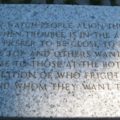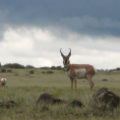A few of you have read some portion of the fantasy novel I’ve been writing for almost 20 years (and still haven’t finished). You may have wondered where I came up with the name of the protagonist, True Seaborn. Even if you haven’t, I’m about to tell you (patience – I do have a reason).
When I first started this back in college around 1983, I collected interesting words and names that I thought I might use I’m not Tolkien and am not going to invent entire languages! I was then working part-time at a printing company, and saw the name “True Seaborn” on the masthead of a magazine that happened to be lying around. I thought it was about the coolest name I’d ever heard of, so I appropriated it for my hero who, among other things, is a sailor. I even wrote a bit of backstory to explain how my character came to have that name, though I’ve always wondered how the original True Seaborn got such a great name. It has class and is full of meaning, yet it’s easy to spell and pronounce – the best of all possible worlds, in a name!
It’s been in the back of my mind for some months to get in touch with the original owner of the name and ask his permission to use it, in case I ever do finish this novel and get it published. I did a Google search and found him easily enough. But then I got distracted and never finished searching out an email address for him.
Well, I didn’t have to. Last week, True Seaborn got in touch with me. It threw me at first, seeing email in my In box from the name I associate with a fictional creation of my own. (Probably there’s the germ of a novel in that, but I digress…). Mr. Seaborn was feeling equally confused. He said: “It is a strange experience to stumble onto a work of fiction that appears at first glance to be written about oneself, by an author one has never met. Of course I’m not quite so vain as to believe you actually wrote your City of Light about me. Still, the name of your protagonist seems like a remarkable coincidence. Would you mind telling me how you came up with it?”
So I explained it to him, and he has graciously consented to let me go on using his name, with some very kind compliments on my writing (he’s now reading through the whole novel). The real True Seaborn turns out to be a very nice person, which is a relief – I might have become hopelessly confused about my protagonist had he been otherwise.
He also told me how he got his name:
“The name Seaborn has two possible origins. One was a family legend that described a young couple from Wales who boarded a ship bound for the New World sometime in the 17th or early 18th century. Either the voyage originated in London and stopped at Liverpool or vice-versa, but according to the story the young man jumped ship at the first stop, leaving his wife to continue the voyage alone. She died in childbirth along the way, and the captain placed the newborn with a family on the coast of Virginia, hence the name. This story supposedly appeared in the Saturday Evening Post, or Colliers, or some such popular magazine sometime in the 1920’s. Whatever the provenance of the name, I’m inclined to believe the magazine story was the source of the family legend and not the reverse.
Militating against the orphan story is the fact that there are a great many Seaborns in Wales and North England today. I met a few of them myself in a trip there about 25 years ago, in an unsuccessful search for relatives. I suppose it’s conceivable an orphan could have been given the name in Virginia, independent of all the real Seaborns living in the Old World, but as you can imagine, I have a built-in bias against such a shameful origin.
I’ve traced our family in this country to a Benjamin Seaborn who died in Tidelands, Virginia, in 1782. I have since learned from a distant cousin that Benjamin was the son of one of two brothers who arrived in Virginia as indentured servants. After Benjamin, the record is pretty reliable – from Virginia, to Tennessee, to Oklahoma, to California.
Another distant cousin let me know he had discovered that the root was Sigbjorne or Sigbjorn, a common Norwegian name today, meaning – I think he said – spear carrier or spear thrower.
The origin of True is fairly direct: I was named after one of my father’s old girlfriends (Mary Ann True). My parents went to their graves without volunteering to explain how that came about, or how my mother felt about it. And I never had the nerve to ask.”
I don’t suppose anyone will ever write a novel with a Deirdré Straughan as the main character – too weird-looking in print, and impossible to spell or pronounce.





